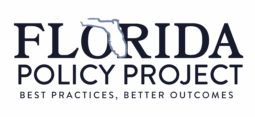|
Rising housing costs are not just a concern in Florida—they are a crisis defining daily life for millions of residents.
This website and interactive housing shortage map offer Floridians a data-driven tool to address their local housing problems. Developed by housing economists for the DeVoe L. Moore Center at Florida State University, the Florida Policy Project, and Reason Foundation, the tool allows residents and elected officials to see local-level housing trends, track shortages in single-family and rental units, and understand whether their local market has been in balance, surplus, or deficit over time.
This anxiety is grounded in decades of housing market failure. Landmark studies of Florida’s growth management system found that affordability began declining in the 1990s, long before today’s surge in prices. Between 1994 and 2007 alone, housing affordability fell by 60%. The COVID-19 pandemic and its aftermath accelerated the collapse, with home prices and rents skyrocketing at double-digit rates while wages lagged far behind.
Much of this collapse in affordability can be attributed to Florida’s inability, or unwillingness, to keep housing supply in line with demand. The scarcer housing is, the more households will compete by outbidding each other, and therefore driving up prices. Often, this leaves households at the middle and bottom of the income ladder without an opportunity to compete for home purchases or rentals.
Today, Florida faces a severe housing shortage: approximately 55,000 single-family units and more than 66,000 rental units are missing from the market. Yet the gap is even worse in certain metro areas—Miami-Dade, Fort Lauderdale, and Tampa rank among the least affordable housing markets in the nation.
The causes are layered and persistent:
- Permitting delays can drag out projects for months or years. Unfortunately, drives up housing costs.
- Restrictive zoning locks in low-density, single-family development. Often, ignores the demand for smaller homes, townhomes, and apartments
- Limited adoption of flexible solutions such as accessory dwelling units (ADUs) and residential duplex units (RDUs) could be blended gradually into neighborhoods while aiming to preserve local charm and character.
- Local politics that turn housing developments into battlegrounds. Add layers of complexity, uncertainty, and costs that restrict developers, entrepreneurs, and locals from adding housing supply in a timely and sustainable manner.
The consequences ripple through the state’s economy and quality of life. Businesses cite housing costs as a barrier to attracting and retaining workers. Families can be pushed farther from jobs, stuck with long commutes, and are often forced into trade-offs between housing, childcare, and healthcare.
With straight-forward housing supply numbers tailored for local use, citizens and policymakers alike can see how deeply the housing shortage cuts into their communities—and why fixing Florida’s broken housing system is no longer optional.

